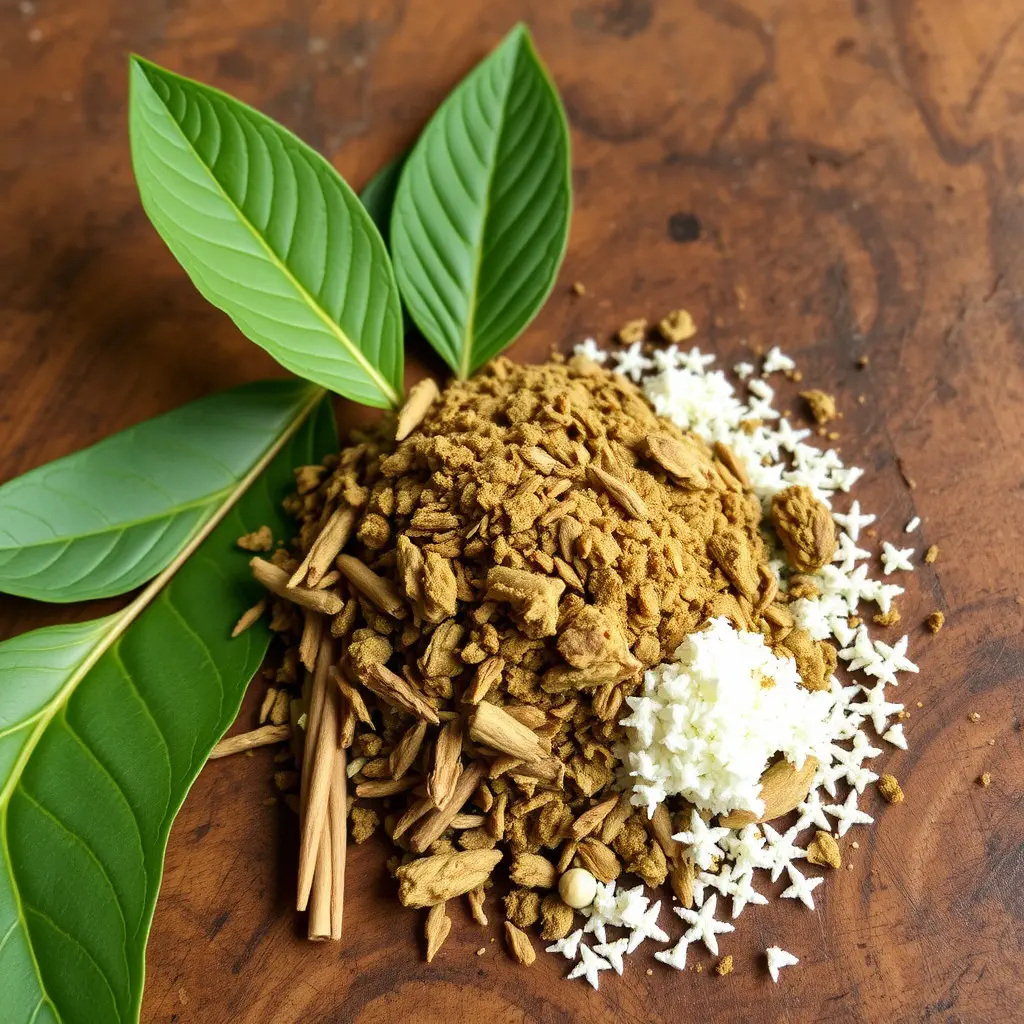2023 information indicates that kratom is a legal substance in Indiana, not explicitly listed under the Controlled Substances Act, but with specific vendor regulations and alkaloid content restrictions. The state's health advisories caution users about potential risks associated with its use. Kratom, sourced from Southeast Asia, contains alkaloids like mitragynine and 7-hydroxymitragynine, which may interact with opioid receptors for pain relief. Indiana's kratom products are capped at a 25mg alkaloid content per dose. Users should heed the advice to approach kratom with caution, seek medical counsel before use, and monitor updates from authoritative bodies like the Indiana General Assembly or CDC for compliance with Indiana's evolving kratom laws. Additionally, adhering to dosage guidelines is crucial to avoid adverse effects and ensuring purchases from reputable vendors with third-party lab results is essential for purity and potency. Prospective users must consider their individual health status and any concurrent medications when evaluating kratom for muscle soreness relief, understanding its potential for addiction and interactions with other substances.
Exploring the therapeutic potential of kratom for muscle soreness relief, this article offers a comprehensive guide tailored for residents under Indiana kratom laws. Delve into the legal landscape governing kratom use in the state and understand how this natural substance can play a role in mitigating post-exercise discomfort. We will also outline safe dosage practices to maximize benefits while adhering to regulations, ensuring readers are well-informed on both the legal and practical aspects of using kratom for muscle soreness relief.
- Navigating Indiana Kratom Laws: A Legal Perspective on Muscle Soreness Relief
- Understanding Kratom's Role in Alleviating Muscle Soreness
- Effective Dosage and Safety Measures When Using Kratom for Soreness
Navigating Indiana Kratom Laws: A Legal Perspective on Muscle Soreness Relief

When exploring muscle soreness relief options, understanding Indiana’s stance on kratom is paramount for legal compliance and safety. As of the knowledge cutoff in 2023, kratom, a plant from Southeast Asia, has gained attention as a potential natural remedy for pain management, including muscle soreness. However, its legal status varies across different states within the U.S., with Indiana having a specific set of regulations that users must navigate.
In Indiana, kratom is not explicitly listed as a controlled substance under the state’s Controlled Substances Act, which means it is currently legal to possess and use kratom. However, the Indiana State Poison Control Center has issued a health warning about the risks associated with kratom use. This advisory underscores the importance of consumers exercising caution and consulting with healthcare professionals before incorporating kratom into their wellness regimen for muscle soreness relief. It’s important to stay informed, as state laws can evolve; therefore, individuals should regularly check local legislative updates regarding kratom through reliable sources such as the Indiana General Assembly or the Centers for Disease Control and Prevention (CDC) for guidance on the legal use of kratom within the state.
Understanding Kratom's Role in Alleviating Muscle Soreness

Kratom, a plant native to Southeast Asia and increasingly recognized for its medicinal properties, has garnered attention in discussions surrounding muscle soreness relief. The alkaloids present in kratom leaves, primarily mitragynine and 7-hydroxymitragynine, are believed to interact with the body’s opioid receptors, offering pain-relieving effects. This interaction may help alleviate the discomfort associated with muscle soreness, which can be particularly beneficial for individuals engaging in strenuous physical activities or those experiencing chronic pain. Users in states like Indiana, where kratom legality is a topic of ongoing discussion, are exploring its potential as a natural remedy for post-exercise recovery. The 2018 Farm Bill legally defined kratom as a dietary supplement at the federal level, yet individual state laws vary; in Indiana, for example, kratom is legal but subject to strict vendor regulations. Prospective users should be aware of their local regulations and consult with healthcare professionals before incorporating kratom into their wellness routine. Studies on kratom’s efficacy for muscle soreness are still emerging, yet anecdotal evidence and preliminary research suggest that it may offer significant relief for some individuals, making it a subject of growing interest in the realms of natural health and fitness.
Effective Dosage and Safety Measures When Using Kratom for Soreness

When incorporating kratom into a regimen for muscle soreness relief, adhering to effective dosage and safety measures is paramount. The alkaloids present in kratom, such as mitragynine and 7-hydroxymitragynine, interact with the body’s opioid receptors, which can provide analgesic effects. However, the appropriate dosage can vary depending on individual tolerance, body composition, and the specific strain of kratom used. It is generally recommended to start with a low dose to gauge one’s sensitivity before gradually increasing the amount. For instance, a standard starting dose might be around 1-2 grams, with some individuals requiring up to 5-15 grams for significant pain relief. Nonetheless, it’s crucial to approach kratom use cautiously and never exceed recommended doses, as overconsumption can lead to adverse effects.
Safety measures are equally important when using kratom. Users should be aware of their local laws regarding kratom, such as the regulations in Indiana. The state of Indiana has specific kratom laws that dictate its sale and use, with legislation that requires kratom products to contain no more than 25 milligrams of total alkaloids per dosage form. It’s essential to purchase kratom from reputable vendors who provide third-party lab test results to ensure the product’s safety and efficacy. Additionally, individuals should consult with a healthcare provider before integrating kratom into their wellness routine, especially if they have pre-existing health conditions or are taking other medications. Monitoring the effects of kratom on one’s body and being mindful of its potential for addiction and interactions with other substances are critical steps in using kratom safely for muscle soreness relief.
When exploring the intersection of Indiana kratom laws and muscle soreness relief, it becomes evident that users must navigate a complex regulatory landscape. Understanding Kratom’s potential in alleviating discomfort from muscle soreness is crucial, yet it is equally imperative to approach its use with caution and informed dosage guidance. This article has shed light on the legal considerations for Indiana residents interested in kratom as a remedy and provided insights into safe practices for those considering this approach. As with any natural or pharmaceutical intervention, individual experiences may vary, and users are encouraged to consult healthcare professionals before incorporating kratom into their wellness routine. With careful adherence to both legal guidelines and safety protocols, kratom may offer a valuable option for muscle soreness relief within the bounds of Indiana’s regulatory framework.






